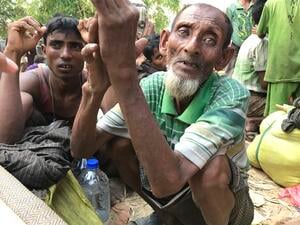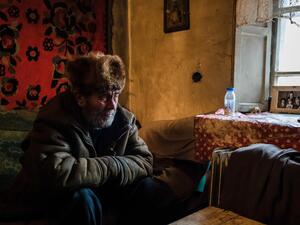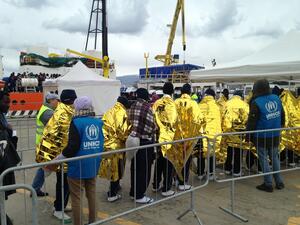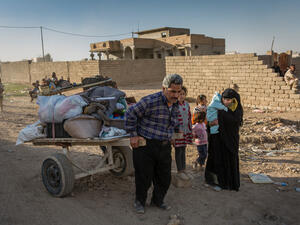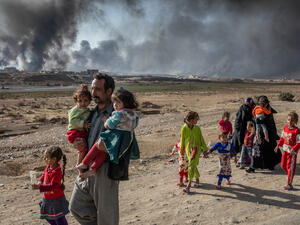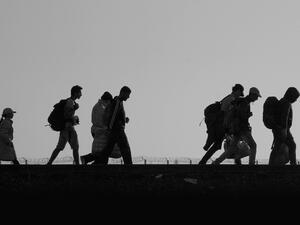Asylum figures fall in 2010 to almost half their 2001 levels
Asylum figures fall in 2010 to almost half their 2001 levels
GENEVA - The number of asylum-seekers in the industrialized world continued to fall in 2010, bringing the figure down to nearly half the level at the start of the millennium.
This was among the main findings as the UN refugee agency today released its 2010 statistical overview of asylum applications in 44 industrialized countries.* The report deals with new asylum claims and does not show how many individuals were granted refugee status.
According to the report, 358,800 asylum applications were lodged in industrialized countries last year - down 5 per cent from 2009, and some 42 per cent lower than the decade's peak in 2001, when almost 620,000 asylum applications were made.
"The global dynamics of asylum are changing. Asylum claims in the industrialized world are much lower than a decade ago while year-on-year levels are up in only a handful of countries," said High Commissioner for Refugees António Guterres. "We need to study the root causes to see if the decline is because of fewer push factors in areas of origin, or tighter migration control in countries of asylum."
Numbers fall in most regions
Last year's total number of new asylum claims was the fourth lowest in the last decade. Year-on-year decreases were reported in most regions, including in Europe, North America and North Asia. Within Europe, the largest decline was seen in southern Europe, where claims fell by 33 per cent compared to 2009. This was mainly because fewer people requested protection in Malta, Italy and Greece. However, this decline was offset by increases elsewhere, especially in Germany (49%), Sweden (32%), Denmark (30%), Turkey (18%), Belgium (16%) and France (13%). In the Nordic countries, the increases in Denmark and Sweden were offset by substantial declines in Norway (-42 per cent) and Finland (-32 per cent).
Among continents, only Australasia saw more asylum claims compared to 2009. Australia received 8,250 applications, an increase of 33 per cent. Nonetheless, applications there were well below levels recorded in other industrialized and non-industrialized countries, and were down by more than a third compared to 2001.
US tops recipient list
Among individual countries, the United States remained the largest asylum recipient for the fifth consecutive year, accounting for one out of every six asylum applications in the industrialized countries covered in the report. The US saw an increase of 6,500 applications, partly due to a rise in the number of Chinese and Mexican asylum-seekers.
France maintained its position as host to the second-largest number of new applications, with 47,800 in 2010, largely from Serbian, Russian and Congolese asylum-seekers. Germany became the third-largest recipient country with a 49-percent rise. The increases can partly be attributed to a rise in asylum seekers from Serbia and the former Yugoslav Republic of Macedonia. That development is widely attributed to the introduction of visa-free entry to the European Union for nationals of these two countries since December 2009.
Sweden and Canada ranked fourth and fifth respectively. Together, the top five countries of asylum accounted for more than half (56 per cent) of all asylum applications covered in this report.
Most claims from Serbia
In terms of places of origin, the largest group of asylum-seekers in 2010 were from Serbia (28,900, including Kosovo). The country saw a 54 per cent increase compared to 2009, when it ranked sixth. Interestingly, the number of asylum applications in 2010 was comparable to 2001, soon after the Kosovo crisis.
Afghanistan slid to second place with a decrease of 9 per cent compared to the previous year. Unlike in 2009, when Afghan claims were mainly lodged in Norway and the United Kingdom, in 2010 more claims were filed in Germany and Sweden. Chinese asylum-seekers made up the third-largest asylum group in 2010, partly due to a substantial drop in the number of new applications from Iraq and Somalia. For the first time since 2005, Iraq was not one of the top two countries of origin of asylum-seekers. It dropped to fourth place, followed by the Russian Federation. Somalia, which occupied the third spot in 2009, fell to sixth in 2010.
Putting the latest numbers into the context of recent emergencies in Côte d'Ivoire and Libya, Guterres noted, "Overall, it's still the developing world that is carrying the lion's share of responsibility for hosting refugees. Despite their many other challenges, countries like Liberia, Tunisia and Egypt have kept their borders open to people in need. I call upon all countries to support them."
* The 44 industrialized countries included in this report are: The 27 European Union countries as well as Albania, Australia, Bosnia and Herzegovina, Canada, Croatia, Iceland, Japan, the Republic of Korea, Liechtenstein, Montenegro, New Zealand, Norway, Serbia, Switzerland, Turkey, the United States and the former Yugoslav Republic of Macedonia.


